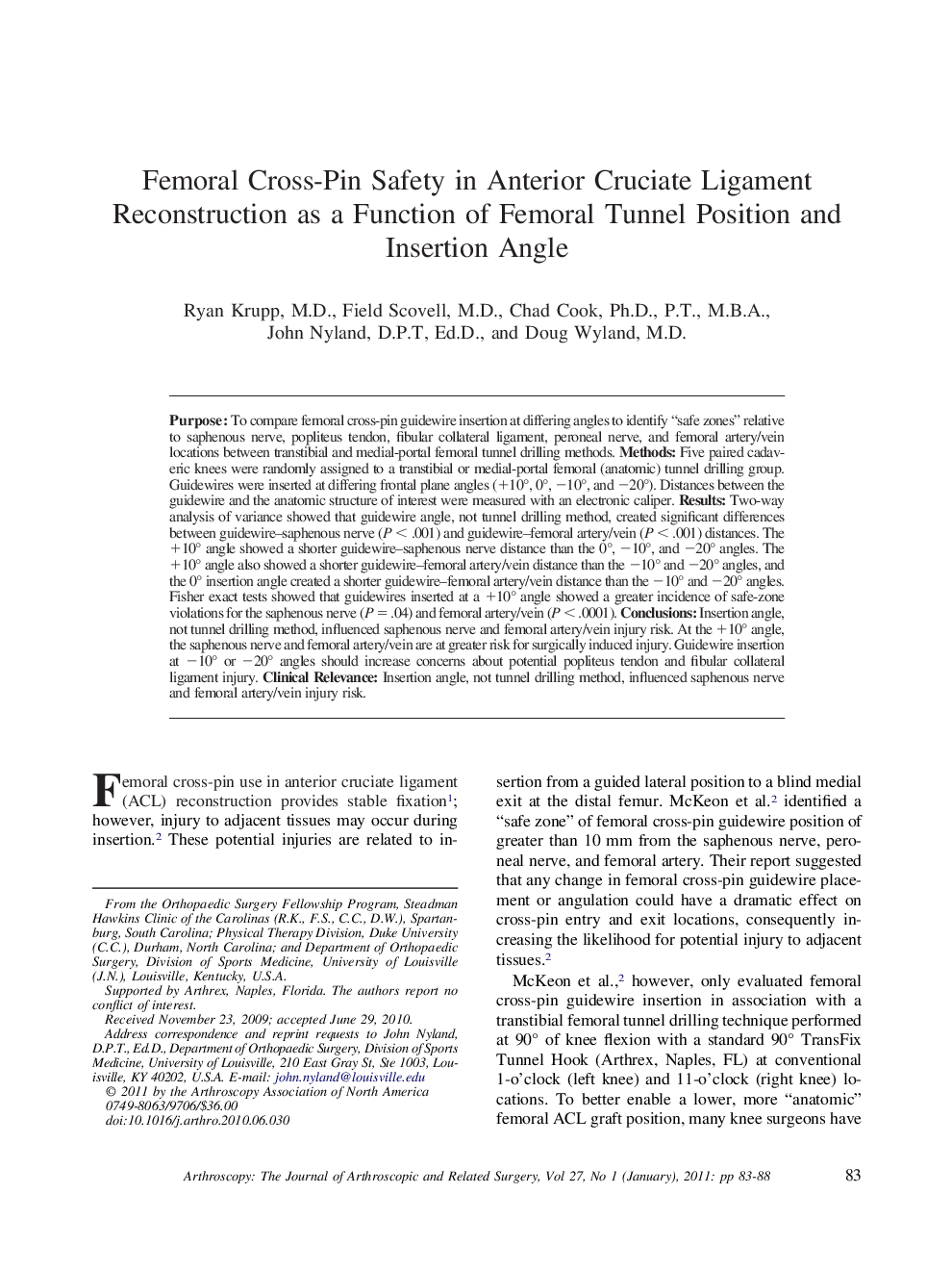| کد مقاله | کد نشریه | سال انتشار | مقاله انگلیسی | نسخه تمام متن |
|---|---|---|---|---|
| 4045769 | 1603548 | 2011 | 6 صفحه PDF | دانلود رایگان |

PurposeTo compare femoral cross-pin guidewire insertion at differing angles to identify “safe zones” relative to saphenous nerve, popliteus tendon, fibular collateral ligament, peroneal nerve, and femoral artery/vein locations between transtibial and medial-portal femoral tunnel drilling methods.MethodsFive paired cadaveric knees were randomly assigned to a transtibial or medial-portal femoral (anatomic) tunnel drilling group. Guidewires were inserted at differing frontal plane angles (+10°, 0°, −10°, and −20°). Distances between the guidewire and the anatomic structure of interest were measured with an electronic caliper.ResultsTwo-way analysis of variance showed that guidewire angle, not tunnel drilling method, created significant differences between guidewire–saphenous nerve (P < .001) and guidewire–femoral artery/vein (P < .001) distances. The +10° angle showed a shorter guidewire–saphenous nerve distance than the 0°, −10°, and −20° angles. The +10° angle also showed a shorter guidewire–femoral artery/vein distance than the −10° and −20° angles, and the 0° insertion angle created a shorter guidewire–femoral artery/vein distance than the −10° and −20° angles. Fisher exact tests showed that guidewires inserted at a +10° angle showed a greater incidence of safe-zone violations for the saphenous nerve (P = .04) and femoral artery/vein (P < .0001).ConclusionsInsertion angle, not tunnel drilling method, influenced saphenous nerve and femoral artery/vein injury risk. At the +10° angle, the saphenous nerve and femoral artery/vein are at greater risk for surgically induced injury. Guidewire insertion at −10° or −20° angles should increase concerns about potential popliteus tendon and fibular collateral ligament injury.Clinical RelevanceInsertion angle, not tunnel drilling method, influenced saphenous nerve and femoral artery/vein injury risk.
Journal: Arthroscopy: The Journal of Arthroscopic & Related Surgery - Volume 27, Issue 1, January 2011, Pages 83–88